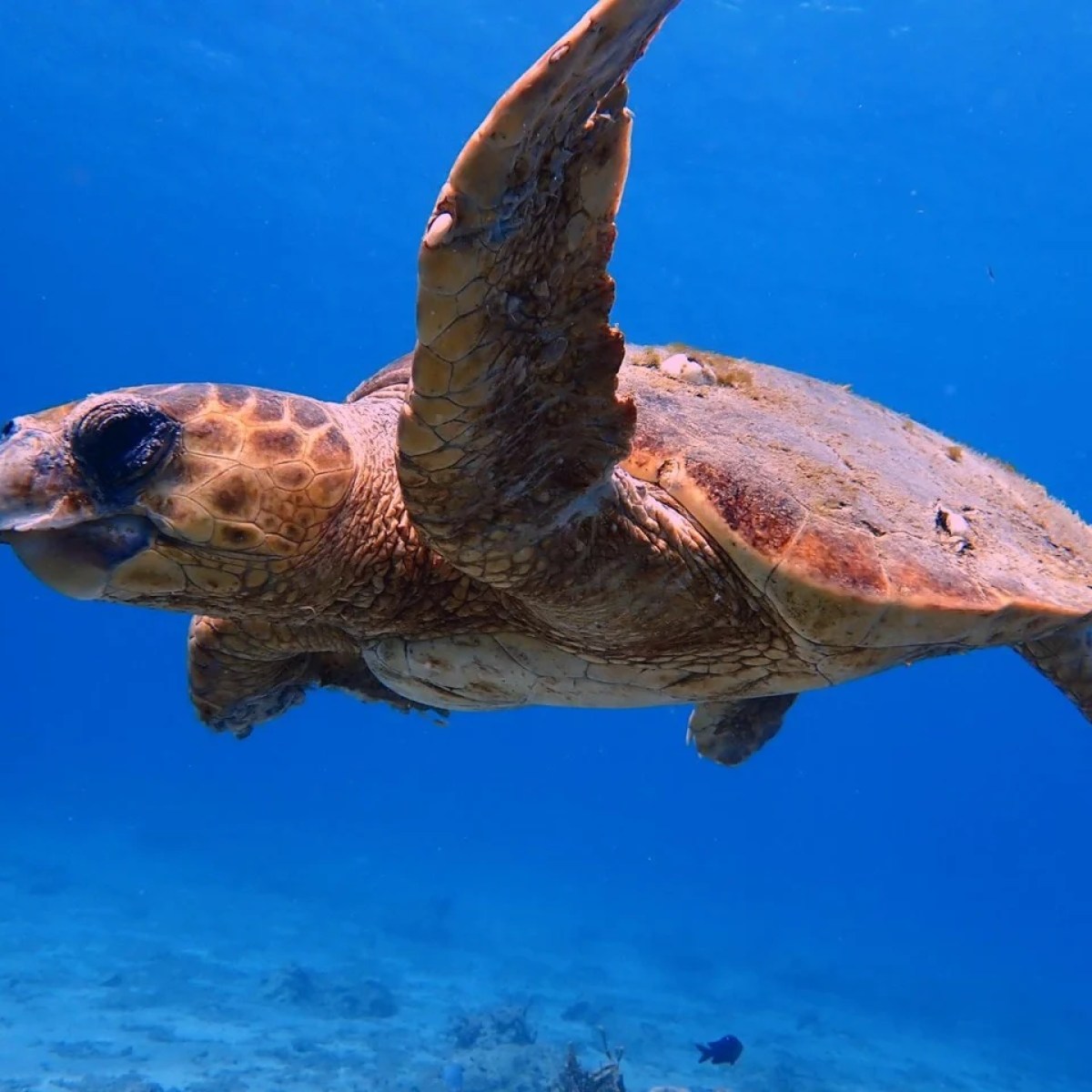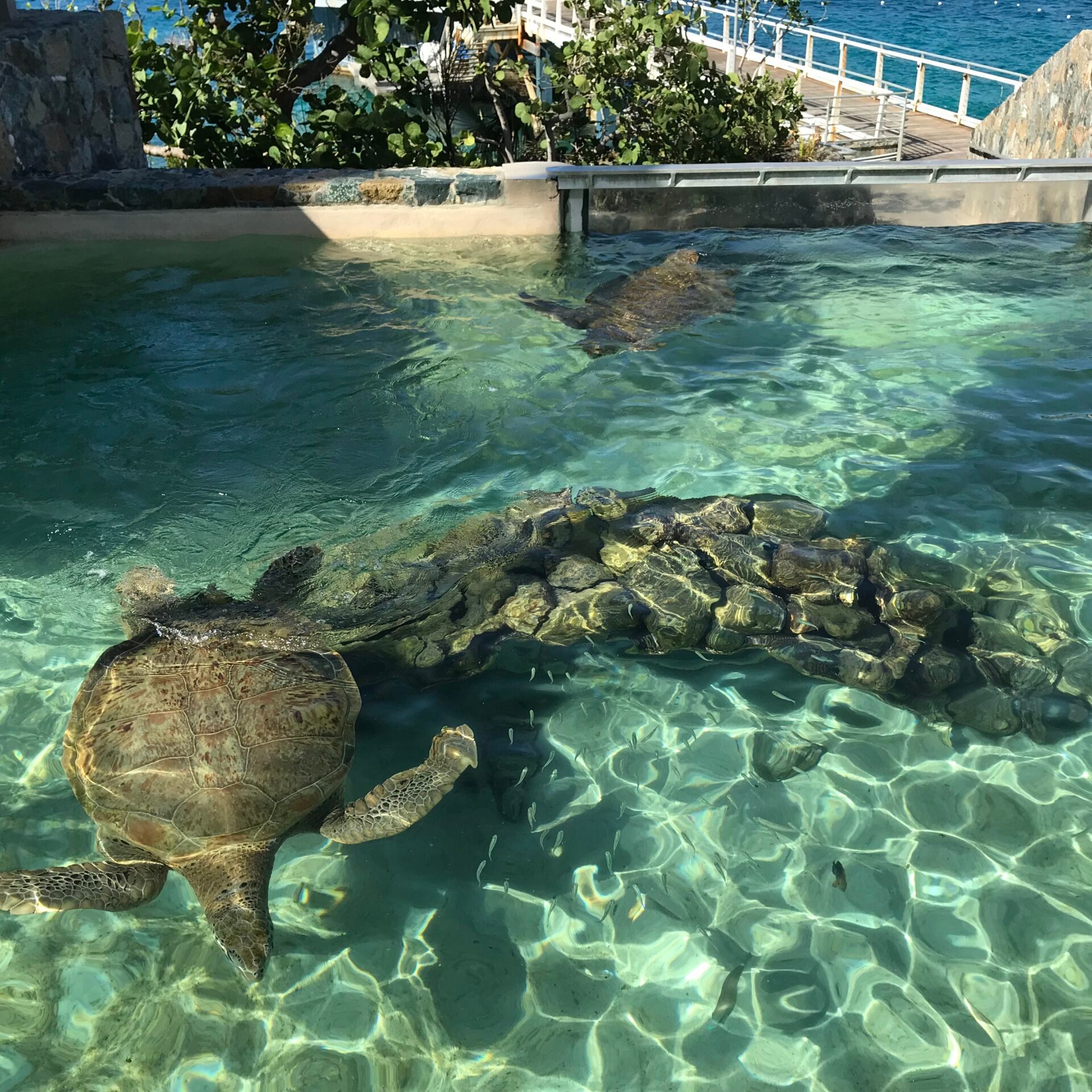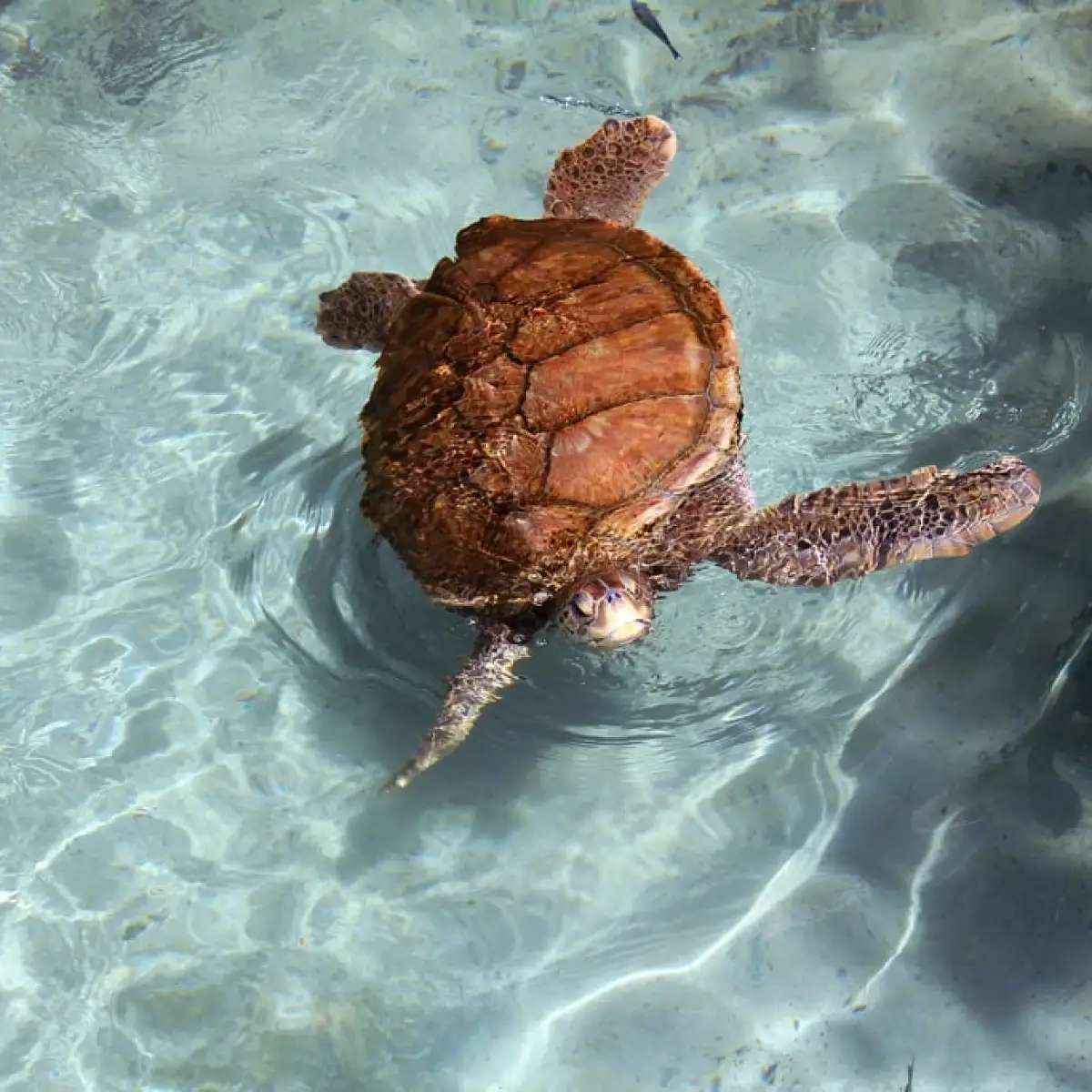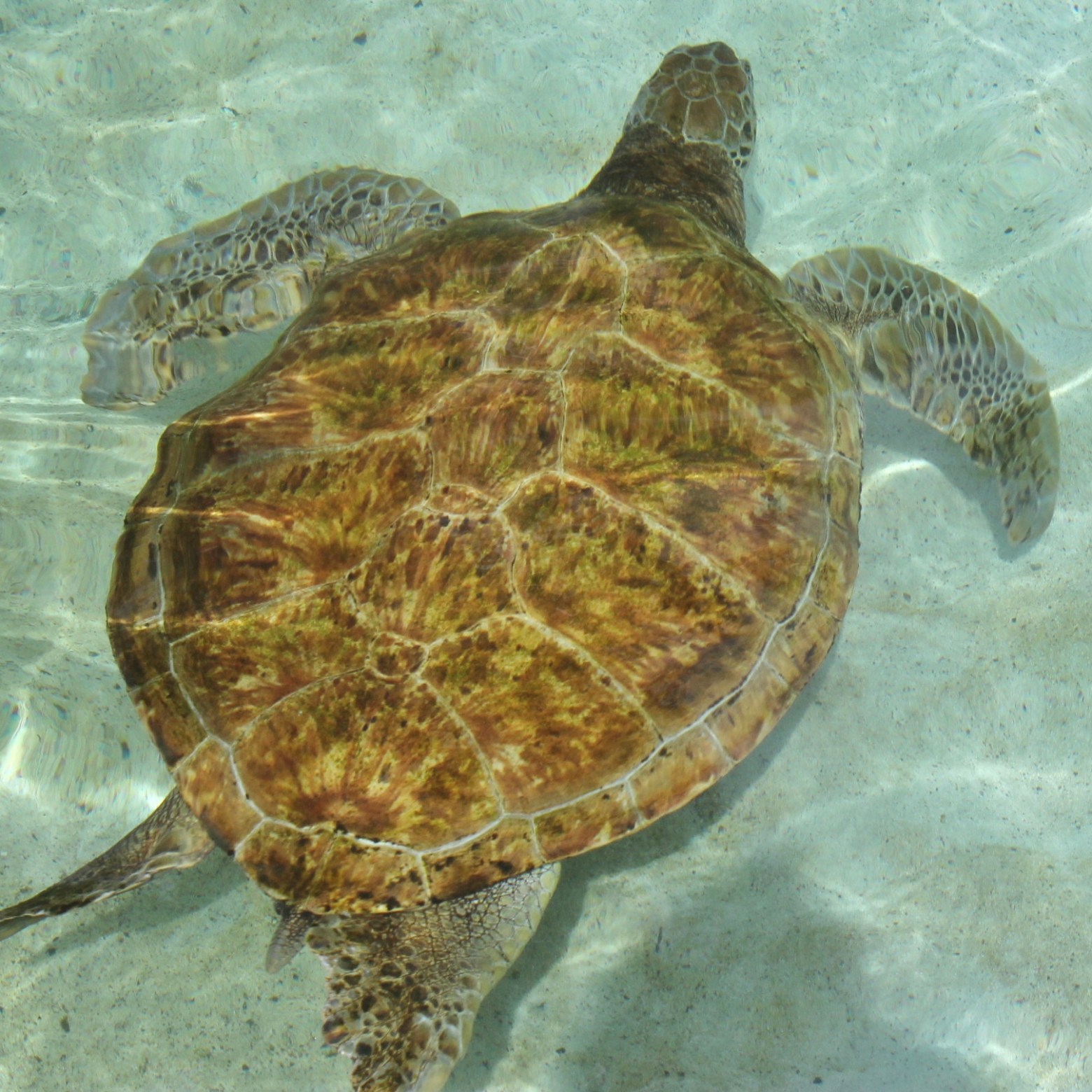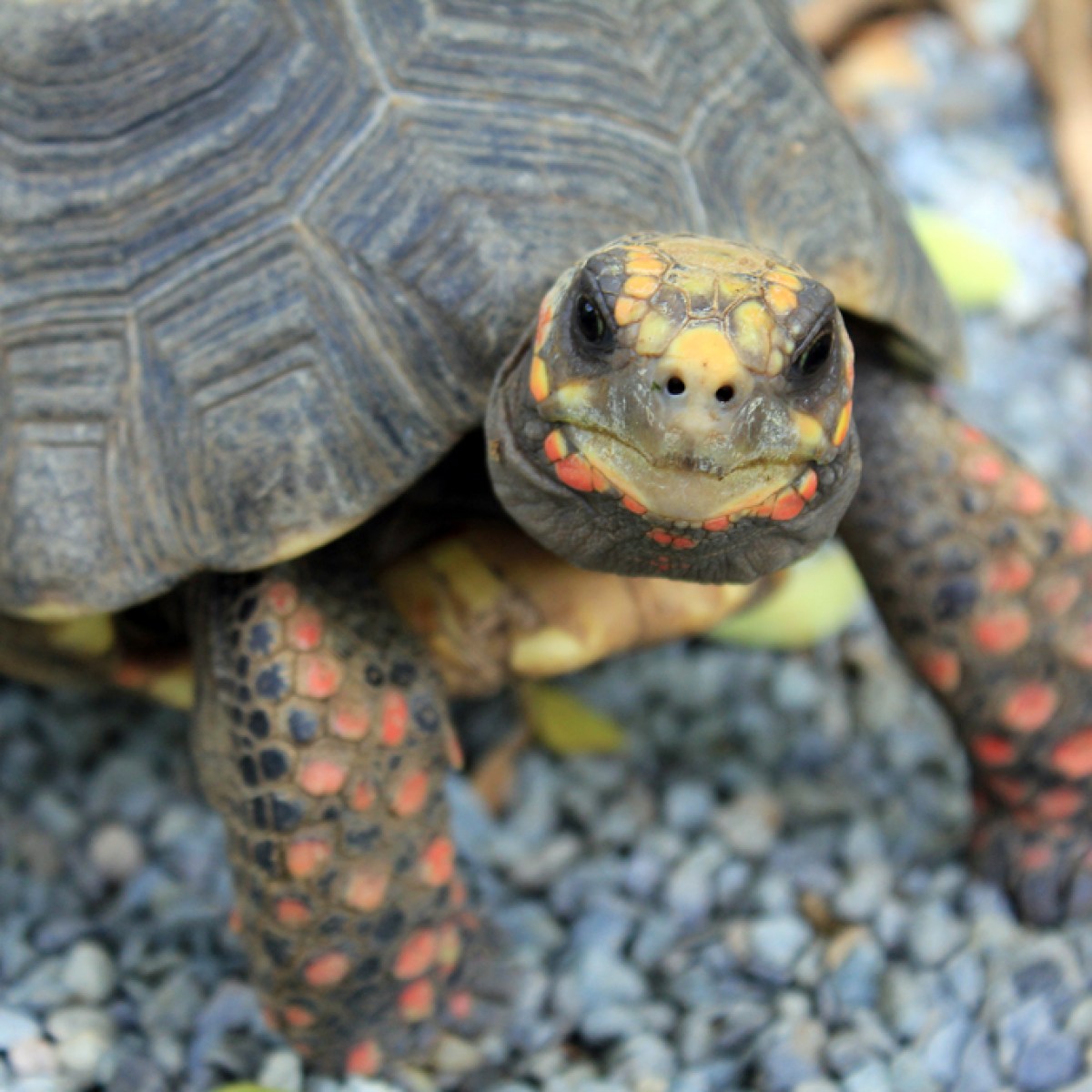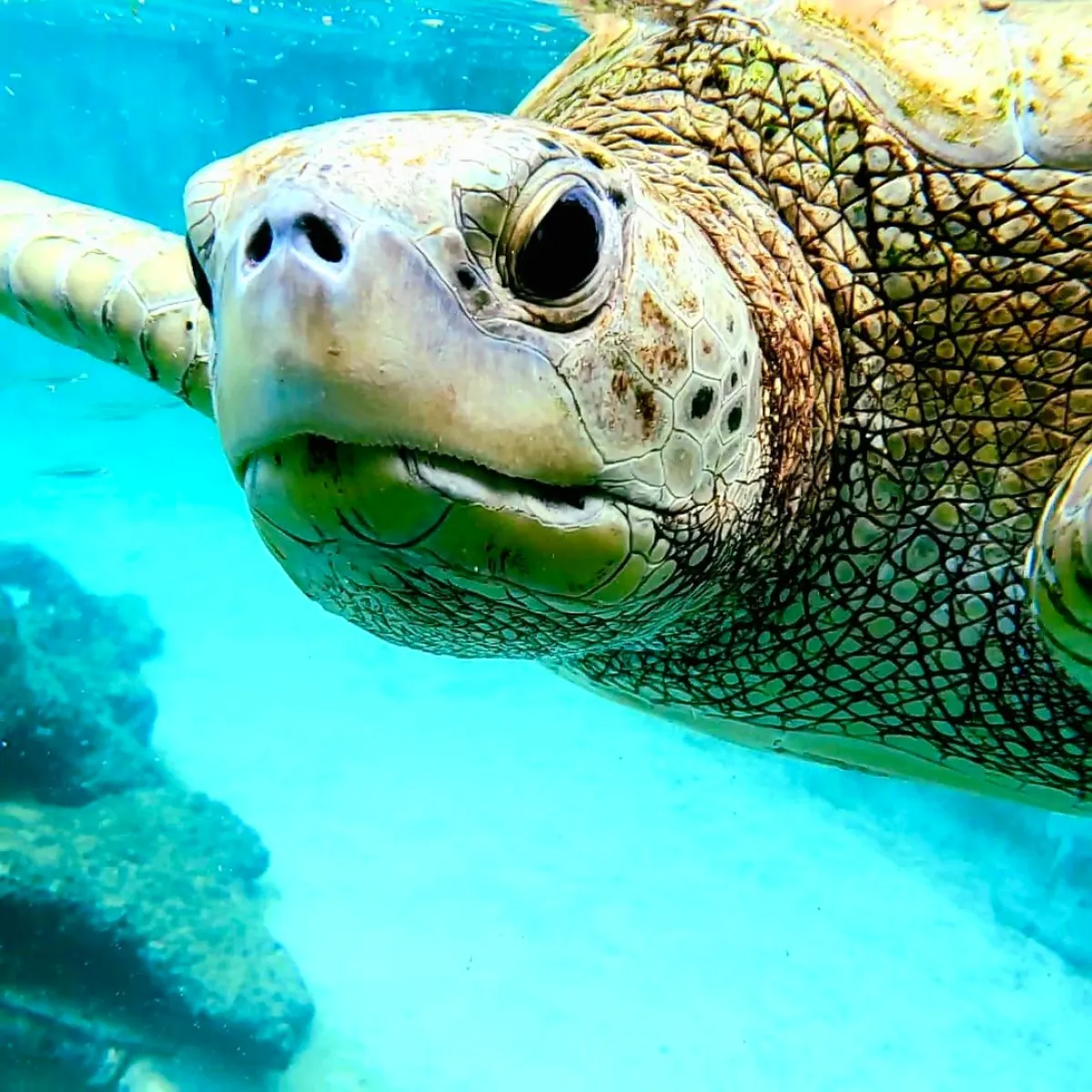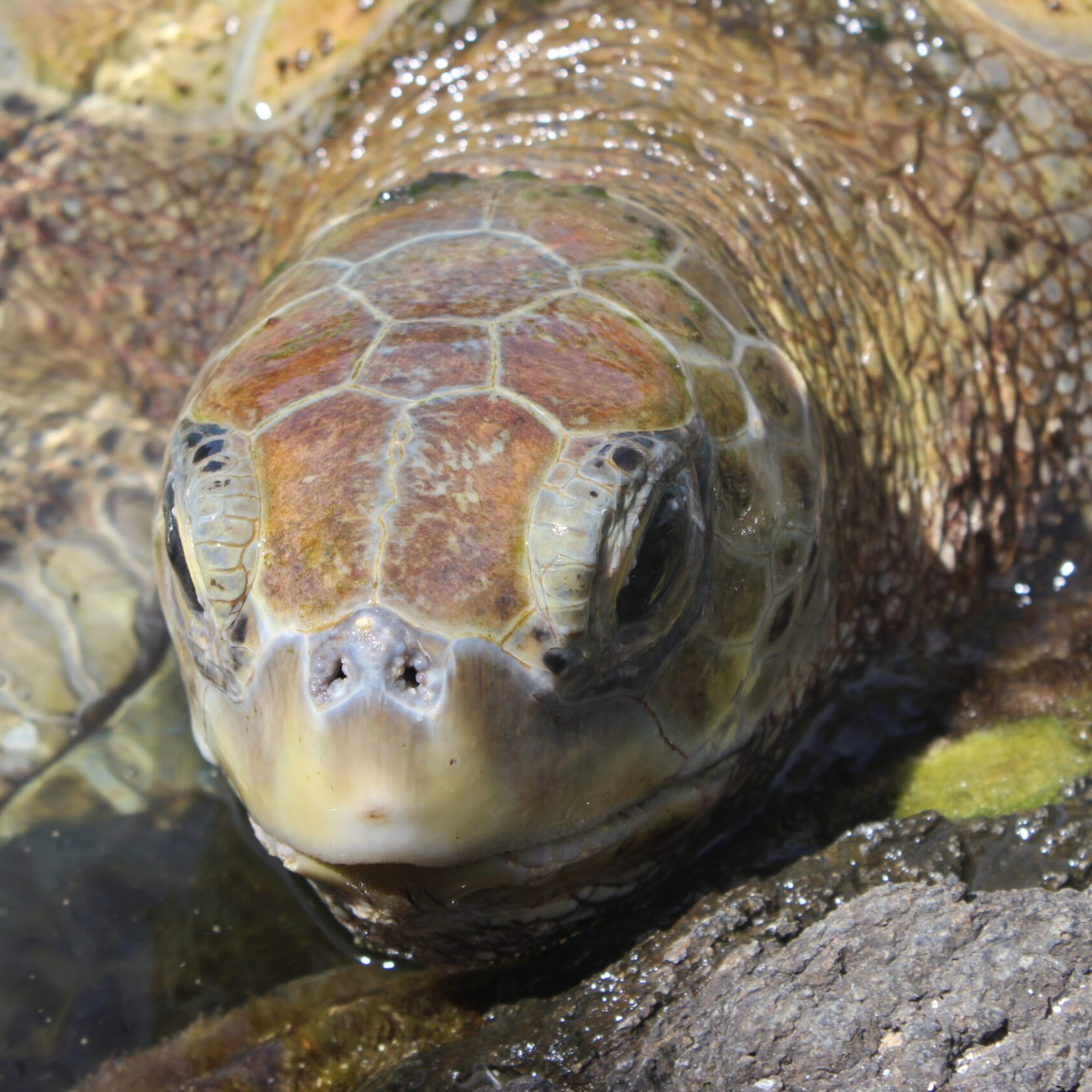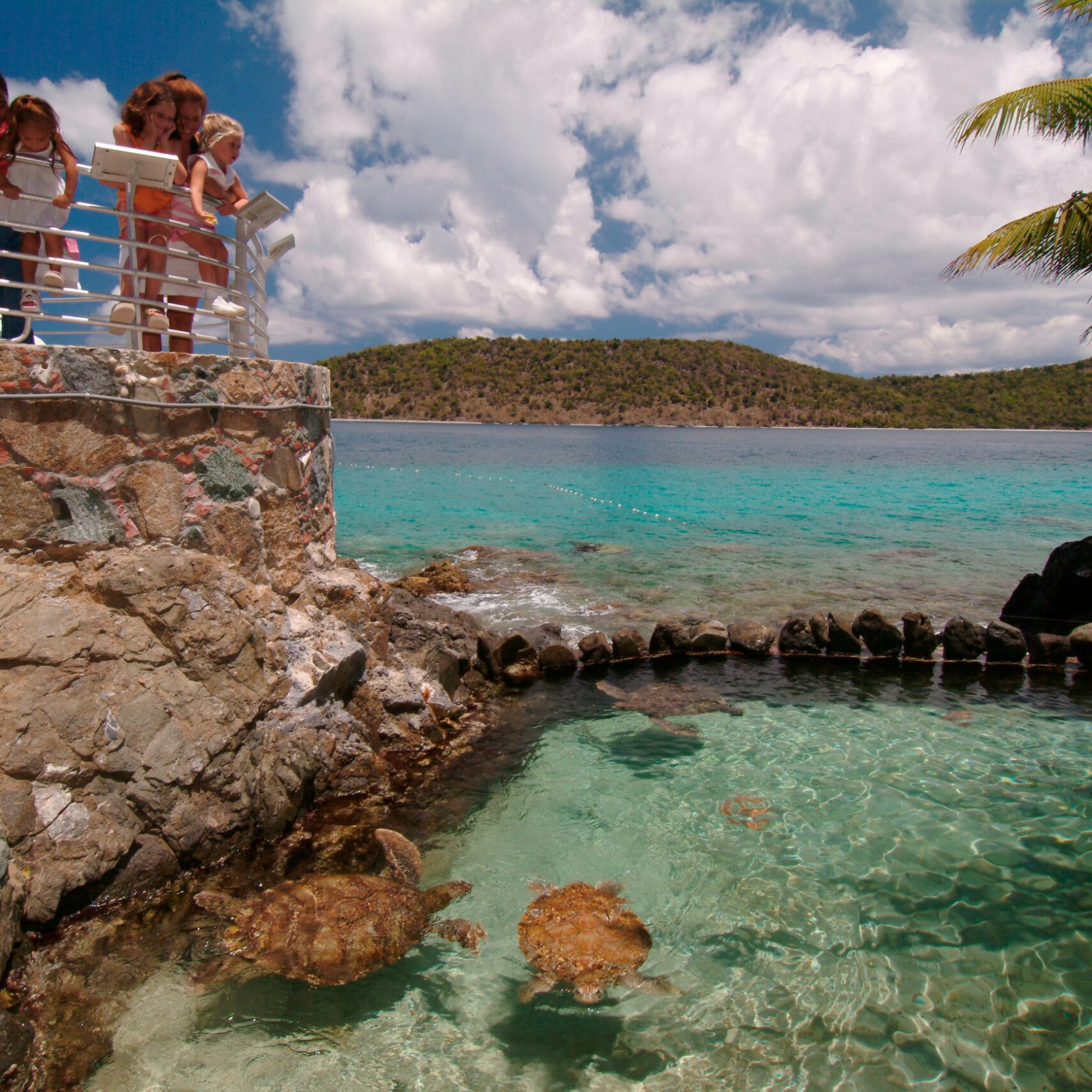The Virgin Islands are home to three species of sea turtles, including green, hawksbill and leatherback sea turtles. These turtle species frequent our local waters year-round and are often seen foraging on coral reefs and sea grass beds, breathing and basking at the water’s surface, or nesting on local beaches. All species of turtle are protected on local, federal, and international levels from human interactions, poaching and habitat destruction.

Green Sea Turtle
The green sea turtle (Chelonia mydas) is a medium to large sized sea turtle. Nesting females average 3 feet) curved carapace (shell) length and can weigh over 400 pounds. Hatchlings are small, with an average carapace length of 2 inches and a weight of less than 1 ounce. The carapace of adult green turtles is smooth along lateral and posterior margins (edges) with non-overlapping scutes (scales). Hatchlings and juveniles have rounded carapaces. Coloration of green sea turtles is variable, ranging from green to gray to brown, and carapaces are frequently marked by darker spots or streaks [Their name derives from the color of their green fat tissues – not from external coloration].
-
The bottom of the carapace (plastron) is usually white or yellow.
Red-Footed Tortoise
The red-footed tortoise is a native of South America. It is hunted there as food. This and habitat loss are the greatest threats to this species. It is also collected for the pet industry.
It is believed that the Carib Indians brought them to the Virgin Islands several hundred years ago as a food source. They are great animals to take on your canoe because they can do without daily food and water.
Although red-foots are commonly found in relatively dry grassland and forest areas, this species is also found in humid forest habitat.
Red-footed tortoises are a medium sized species.
-
Red-foot males are larger than females in carapace length and weight, but are not wider or taller (Moskovits, 1988). To tell the difference between male and female tortoises, look at the underside of the shell or plastron. It is concave in males and flat on a female. That is true for all tortoise species. This particular species has a waist. Males have a deeper waist than females. They are mainly vegetarians but do consume some animal protein in the wild. Their diet consists of weeds, grasses, fruits, insects and worms in nature but they do well in captivity on tortoise chow, greens, veggies, a little fruit and earth worms
Tortoises in the Coral World terrarium vary in age from a few months to about 10 years. The female tortoise digs a hole and buries the eggs under the ground. We have observed from two to four eggs to a nest. It can take up to nine months for the eggs to hatch.
Local Neighbor Species
Hawksbill Sea Turtle
The hawksbill sea turtle (Eretmochelys imbricata) is a small to medium sized sea turtle. Nesting females average 2 feet 9 inches carapace length, measured along the curve, and can weigh as much as 215 pounds. Hatchlings are quite small, averaging 1-3/4 inches carapace length and weighing about 1/2 ounce. The elongated carapace is sharply serrated along lateral and posterior margins. The thickened scutes overlap, with greater overlap toward the rear of the carapace. Hatchlings have a heart-shaped carapace that elongates with maturity. Hawksbill sea turtles have a narrow elongated head and, of course, a distinctive “hawk-like” beak.
-
The hawksbill carapace is a dark amber color with radiating brown streaks. This beautiful “tortoiseshell” pattern led to the wide harvest of hawksbills during the early part of this century.
Leatherback Sea Turtle
The leatherback sea turtle (Dermochelys coriacea) is the largest of the sea turtles. These giant air breathing reptiles may weigh over 600 kg (1,320 pounds). The shell on their back, which is called the carapace may be over 180 cm (almost 6 feet) long. Normally, our only opportunity to closely examine living leatherbacks occurs during their nesting season, when females come ashore, and hatchlings leave. Aside from its large size, the leatherback is unique among sea turtles in several other respects. Adult leatherbacks do not have scutes (scales) covering their carapace as in other sea turtles.
-
Instead, the leatherback carapace is comprised of a thick (~ 4 cm, 1.5”) flexible black skin that resembles rubber or leather [hence the name]. The oil-saturated skin provides the turtle with insulation in cold water, allowing them to feed in the cold North Atlantic waters. There are seven ridges that run the length of the body which form a blunt point near the tail. The front flippers of the leatherback are proportionally much longer (up to one meter long) than those of the other sea turtles. Leatherbacks have two fang-like projections on their upper jaw to help retain soft-bodied prey. Adult leatherbacks are white on their bellies and black on the carapace, however their black coloration is broken up by many white spots. Hatchlings lack the white spots. However the black color is interrupted by seven white stripes running along the ridges. Their skin appears dimpled, with tiny bead-like scales which are later lost as they grow. Hatchlings are large compared to other sea turtles, averaging 6.1 cm (2.5 inches) carapace length and weighing about 45 grams.
Turtle & Tortoise Gallery
Learn from Turtle & Tortoise Experts
Turtle Talk
- 10:30AM – 10:40AM and 1:30PM – 1:40PM
- 7 days a week
- Turtle Encounter Pool
-
Visit one of our green sea turtles and watch as she engages in training and tactile interaction with one of our aquarists. Learn about the dangers green sea turtles face throughout the world and what you can do in your day-to-day life to help save them.



